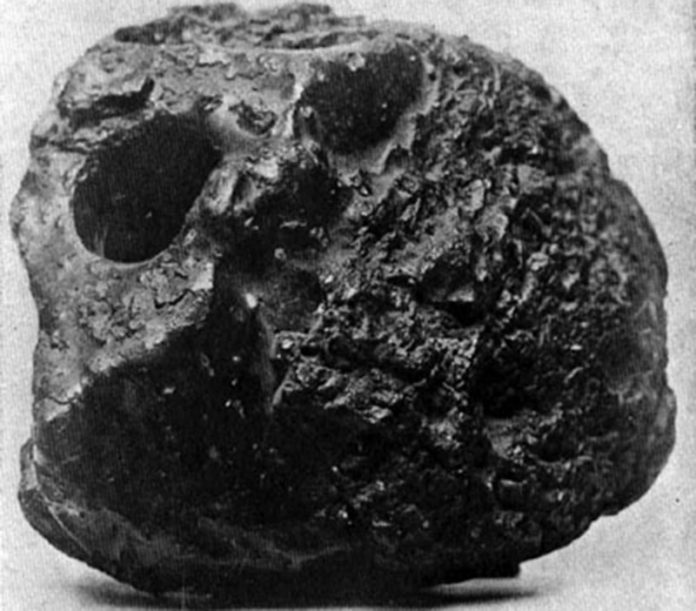The coal torpedo was developed by Thomas Edgeworth Courtenay of St. Louis who, prior to the American Civil War, operated a successful shipping business serving the South’s cotton plantations. During the war, Courtenay sided with the South, working as a Confederate Secret Service. In November 1863, he successfully submitted a plan to President Davis requesting men and funds to supply a mission using his coal torpedo against Federal steamers blockading the Confederacy’s East Coast cities.
The Coal Torpedo – An Effective Civil War Weapon Against Federal Steamers
The exact design of the coal torpedo was lost until, in 2003, Courtenay’s descendants acquired a specimen recovered from an old Confederate garrison. This discovery allowed the design to be recorded. The torpedo was made of cast iron from a mold prepared from actual coal. It was approximately 4x4x3 inches in size and weighed 4 pounds. The interior was filled with 1-1/2 ounces of black powder and sealed with an iron plug. The entire exterior was coated with tar and coal dust. The finished product looked and even smelled like a real piece of coal. Smuggled onto a Federal steamer and placed in the coal bin, the coal torpedo would unknowingly be loaded into the boiler and then explode with enough force to create a secondary pressurized steam explosion capable of destroying the ship.
In 1864, Courtenay described the use of the weapon in a letter to a friend, claiming it had created significant damage to the Union fleet. He stated it was especially effective against iron-clad vessels which were commonly resistent to other weapons such as cannons or shells. Union Admiral D.D. Porter later confirmed the weapon’s effectiveness, writing in 1878 that he witnessed the destruction of the Federal steamer the “Greyhound.” The “Greyhound” was used as a floating Union military command headquarters. Porter, on-board when the steamer’s boiler exploded, managed to escape. He wrote that he suspected the use of a coal torpedo and stated he watched the steamer be completely consumed by fire in less than ten minutes.
The Sinking of the Sultana – Was the Courtenay Coal Torpedo Responsible?
In 1888, the St. Louis Globe-Democrat claimed a coal torpedo may have been responsible for the sinking of the “Sultana” in the Mississippi RIver outside Memphis on April 27, 1865. The “Sultana” was overloaded with Union soldiers recently released from Confederate prisons, cabin passengers, and crew. An estimated 1800 people died. The official cause of the explosion was identified as a combination of poor boiler repairs and careening, a phenomenon in which an over-loaded steamer would shift from side to side causing water level changes in the boilers which then led to steam explosions. However, the Globe-Democrat article claimed that Robert Louden, a former Confederate agent, had bragged that he personally placed a coal torpedo on the “Sultana.” This claim has never been verified.
A Remarkable Secret Weapon That Left No Trace
It is estimated that at least sixty Federal steamers were destroyed during the Civil War by boiler explosions. Because the coal torpedo left no physical evidence, it will never be known how many of these explosions were due to this remarkable secret weapon.
Sources:
- Porter, D. D. 1878. “Torpedo Warfare.” The North American Review, Vol. 127, Issue 264, pp. 213-237.
- Rule, D.H. 2001. “Sabotage of the Sultana.”
- Thatcher, Joseph M. Jr. 1959. “The Courtenay Coal Torpedo.” Military Collector and Historian, Vol XI, Spring.
- Thatcher, Thomas. “Deconstructing an Infernal Machine.”








